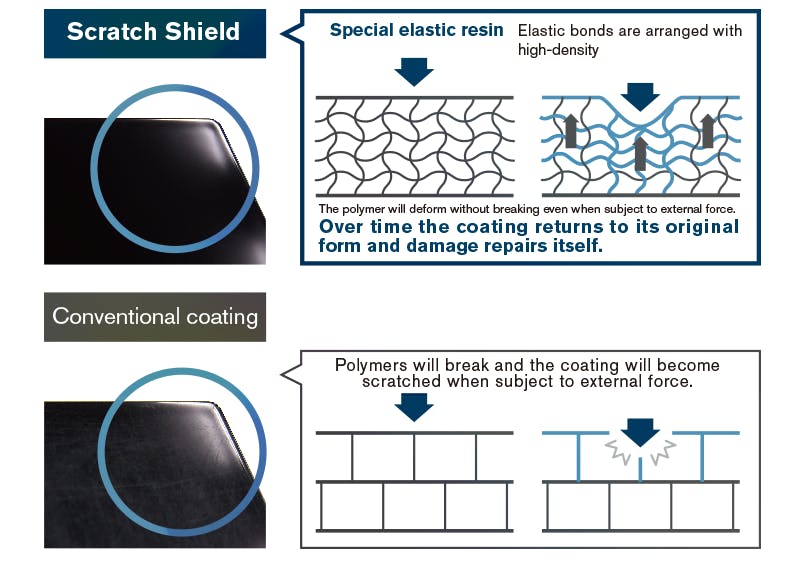Media | Articles
Sun-activated “paint” heals scratches in the time it takes you to sunburn
The wind rustles the plastic bags as you walk out of the grocery store. The fresh air feels good—until you look up and see the shiny metal cart picking up speed, hurtling towards your vehicle. The breeze that moments ago felt so refreshing now puts chills down your spine as that cart careens into your quarter panel. A scratch. The horror.
Imagine if that scrape were fixed by the time you pulled into your driveway. Sounds absurd, but scientists at the Korea Research Institute of Chemical Technology claim to have developed a product that can do just that—though, depending on your proximity to the local grocer, you might need to take the long way home.
Could our paint-scratch nightmares be just one respray away? Maybe. Let’s break down the tech.

Dr. Jin Chul Kim, Dr. Young il Park, and Dr. Ji-Eun Jeong describe their product as a transparent organic photothermal dye that can absorb near-infrared light. Essentially, it is a clear-coat replacement that chemically reconstructs itself when heated by the long-wave rays we call sunlight. The core component is a polymer whose chemical bonds repeatedly break apart and recombine when exposed to wavelengths between 1000 and 1100 nanometers. For context, the visible spectrum of light (the wavelengths we perceive as color) falls between 380 and 700 nm.
For a proof of concept, the dye was sprayed onto a model, scratches put into the roof, and then the whole thing was placed in the sun. 30 minutes later, the scratches were gone. A magnifying glass used to focus the sun’s rays accelerated the process.
Marketplace
Buy and sell classics with confidence
It seems too good to be true, and we have questions.

The main one: How deep and/or large of a scratch can this coating repair? The only details we get are in the photo above, and those don’t give any scale for depth or length. There is a chance that this coating is only capable of fixing microscratches, surface-level imperfections don’t bother most car owners—though anyone that has owned a black car (or has an eye for detailing) has heard those words and likely grimaces just reading them.
Secondly, this concept is not really new. In fact, you might find it at your local used-car lot. Nissan was spraying Scratch Shield clearcoat on its cars as far back as 2009, though that was not heat-activated. Instead, it was an elastic polymer that would rebound and “flow” back into place. Only problem was that it didn’t seem to live up to expectations and was discontinued only a few years of use in the early 2010s. Nissan pivoted to selling it to cell-phone manufacturers.

Korea Research Institute’s new coating could be a flop, but we aren’t ready to say that yet. The concept of having paint that only needs sunlight to heal itself is just too alluring—and, as of this writing, the details are too scarce. To make the idea even more appealing, the Institute claims its photothermal stuff can be sprayed on without the use of solvents, which would make the process that much easier.
Who will be the first to test this light-activated, self-healing coating on a full-scale car—perhaps against real-world shopping carts? The people need to know.





